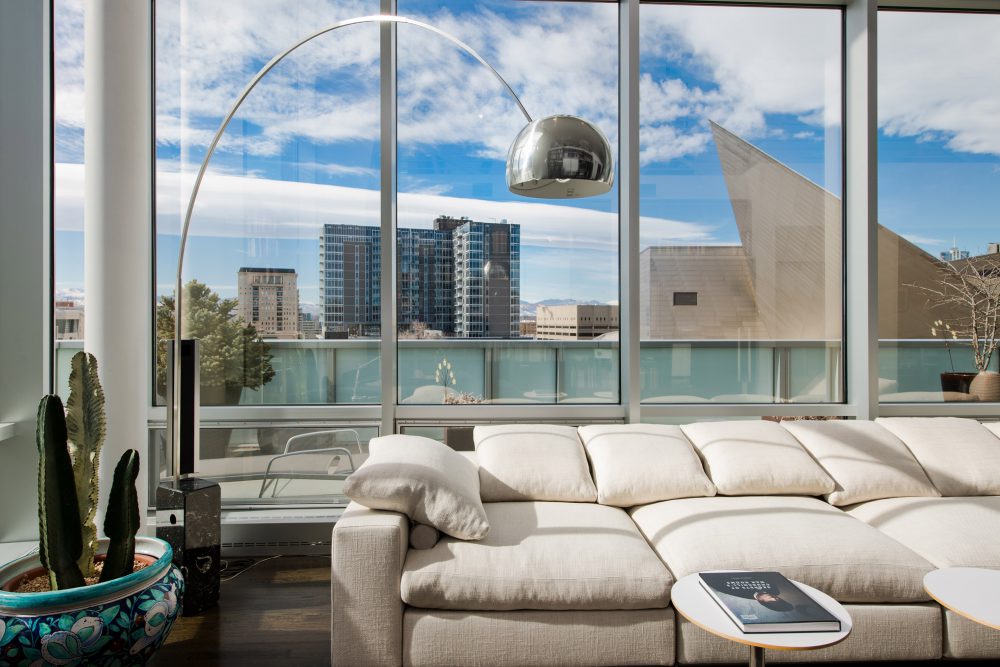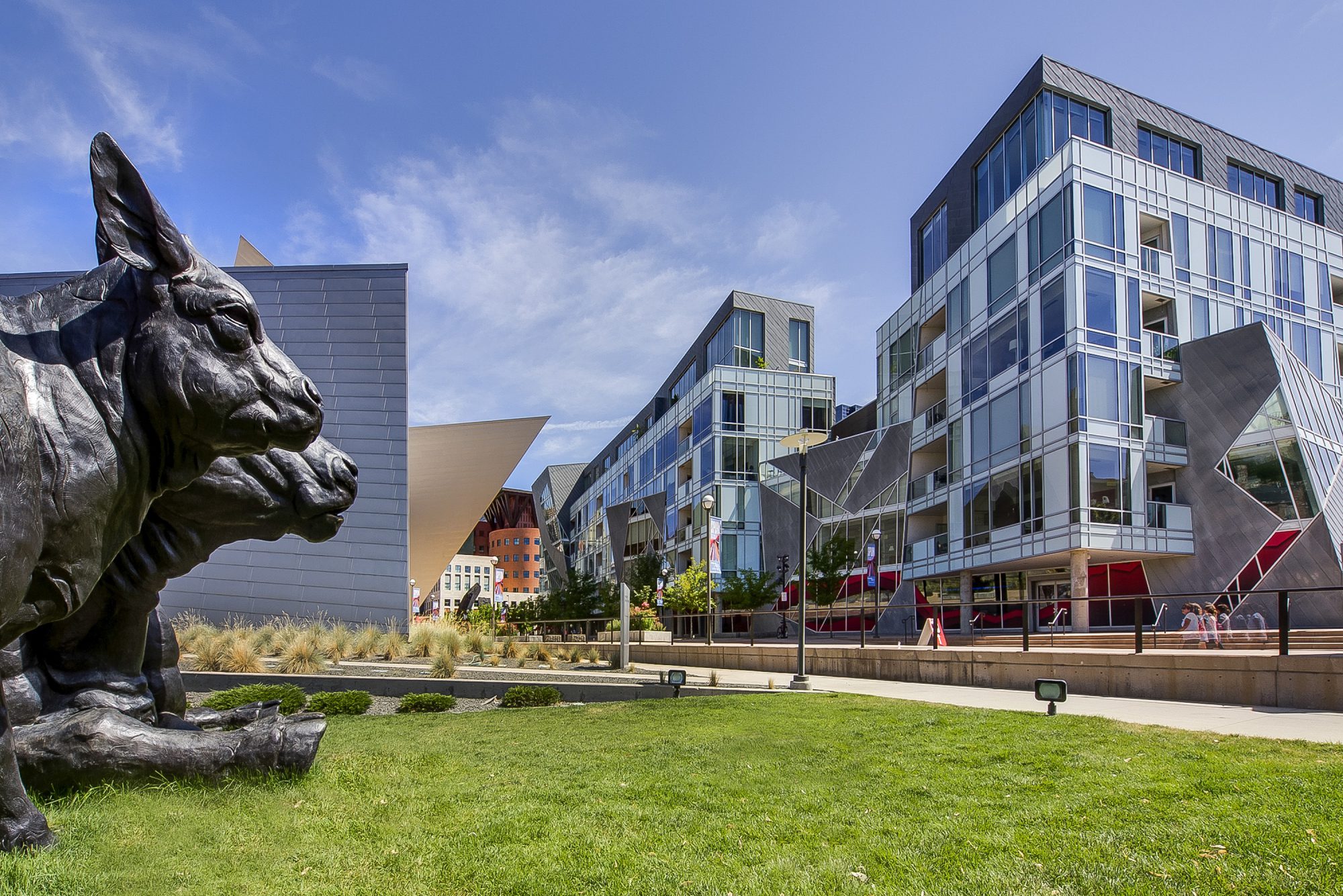

Question -
Cherry Creek North has long been regarded as one of Denver’s most sought-after communities. Why did you decide to leave Cherry Creek North for the Golden Triangle?
Robert -
Joan, who was the Deputy Director of the Denver Art Museum, came home one night and told me about the plans for the Frederic C. Hamilton Building (the new addition to the Denver Art Museum) and the accompanying condominium project. At that point, I felt something special was about to take place. After meeting Daniel Libeskind and his wife, Nina, I was convinced we needed to be in this unique building (The Museum Residences).
Joan -
As Deputy Director, I was directly involved in the process of selecting an architect for the Hamilton Building (Daniel Libeskind was one of five world-famous candidates for the commission). Personally experiencing the competition was very exciting - it was a privilege to have an opportunity to get acquainted with these architects and observe them at the top of their game.
Daniel was really coming into his own at that point - he was very well-known in Europe and had designed buildings on other continents but had yet to receive a major commission in the U. S., despite the fact that he is an American citizen.
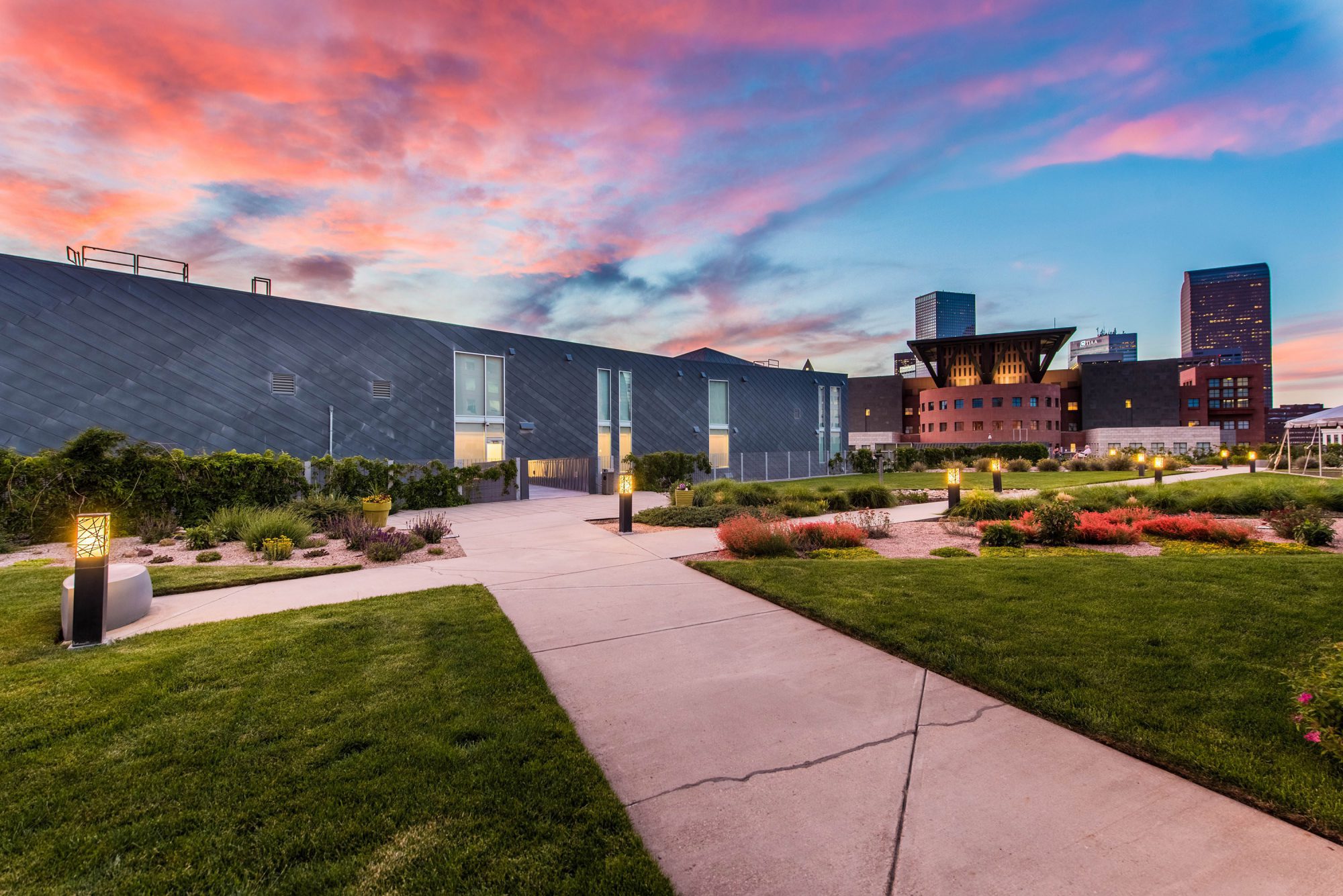
Question -
You flew to Berlin to visit Libeskind’s studio; how did your visit influence your decision to buy?
Joan -
I was totally won over by Daniel and his people during the competition for the Hamilton Building, and I conveyed my enthusiasm to Robert on a daily basis. We decided to go to Berlin to visit his office and see his best-known building at that point, the Jewish Museum, over Thanksgiving in 1999. When we went to Berlin, both the Hamilton Building and the Museum Residences were still years away from completion. We were really impressed by the creative buzz in Daniel’s studio and thrilled to be able to tour the Jewish Museum with one of his assistants. At that time, the Jewish Museum was not yet open, and it had not been installed with exhibits - it was an empty building. But the spaces within it, including a completely dark room with a narrowing vaulted ceiling that conveyed a visceral sense of doom, a staircase that went nowhere and suggested the impossibility of escape, and a ‘garden’ made up of pillars set slightly askew that summoned the feeling of dislocation experienced by Jews who survived the war but lost their ancestral homes and their families, were incredibly moving. We felt Daniel’s genius in that building; it actually took awhile to recover from the emotional experience.
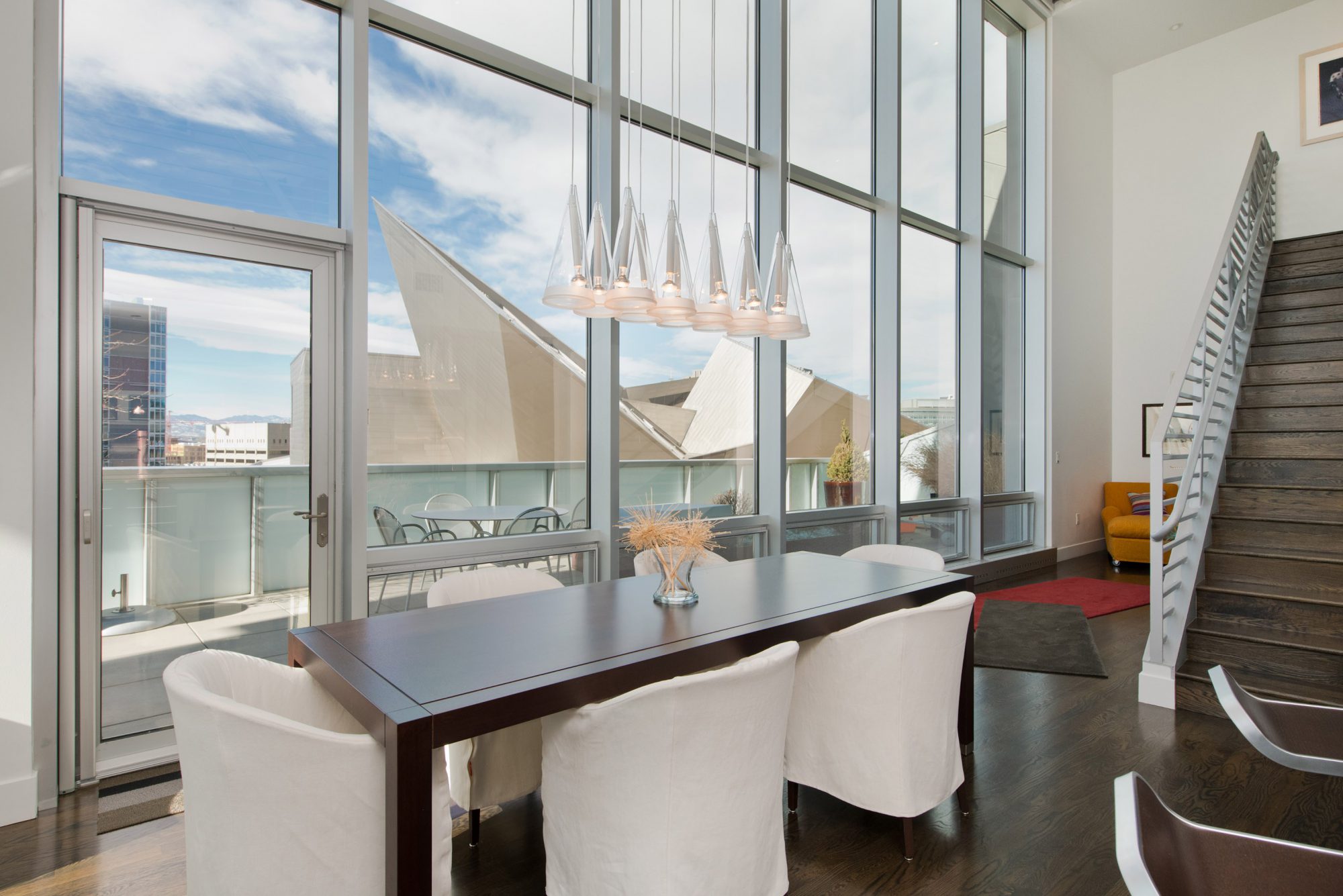
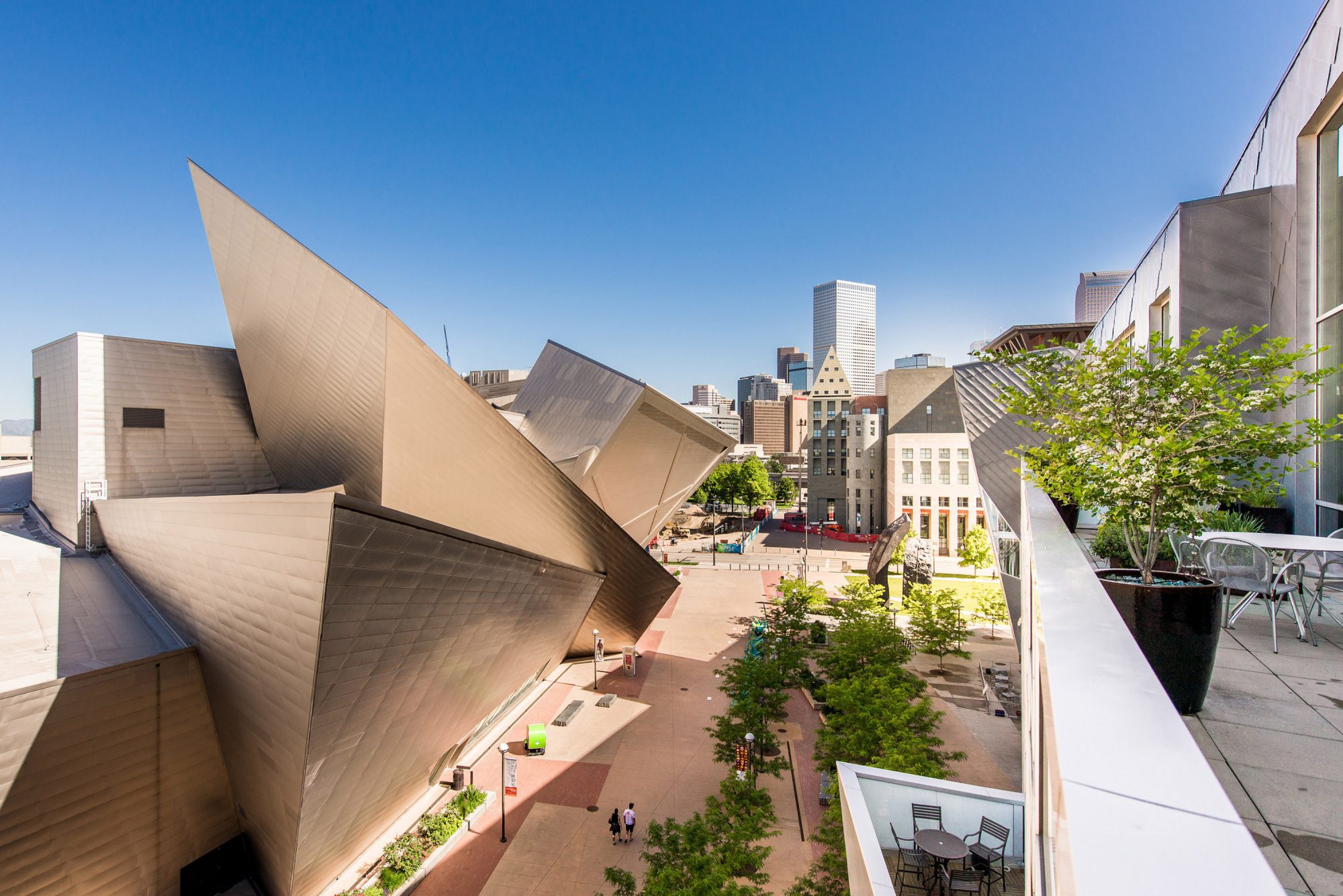
Question -
Despite Joan’s connection to the Denver Art Museum and your visit to Berlin, you decided to look at other residences in Riverfront, LoDo and the Central Business District. Ultimately, what made you pick the Museum Residences?
Joan -
The other places we looked at were of far less quality than the Museum Residences in terms of design, materials, and construction. None of them had a “buffer zone” comparable to Martin Plaza. The Museum Residences also had an unrivalled potential as a unique place for us to entertain friends, family and professional colleagues. Our guests always enjoyed the fact that they didn’t have to fight the traffic downtown, and, to this day, everyone wants to see the building.
Robert -
Our unit at the Museum Residences is insulated by the Denver Art Museum and Martin Plaza - plus it was designed by a world-renowned architect - that is something that will never change and could not be found anywhere else in Denver.
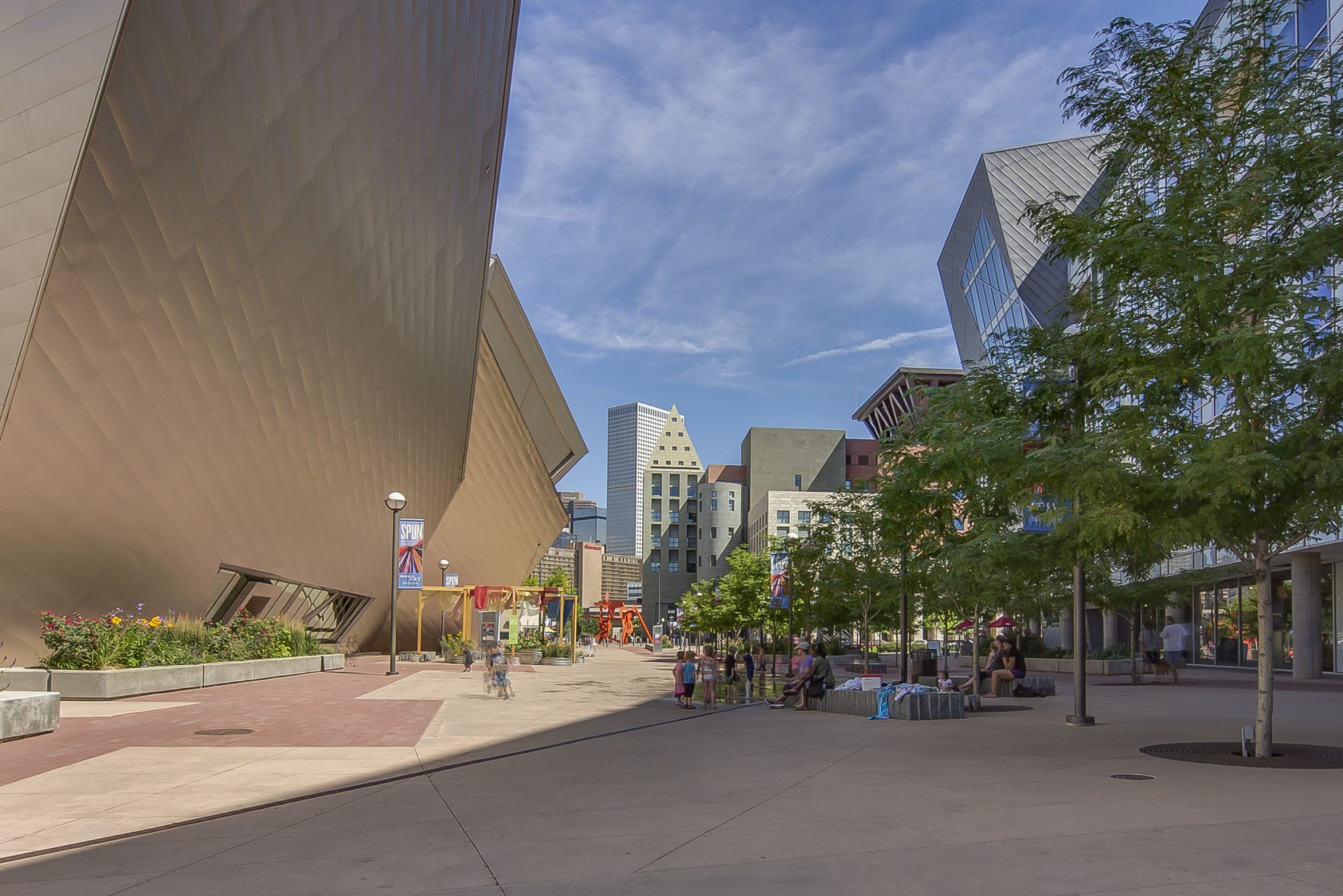
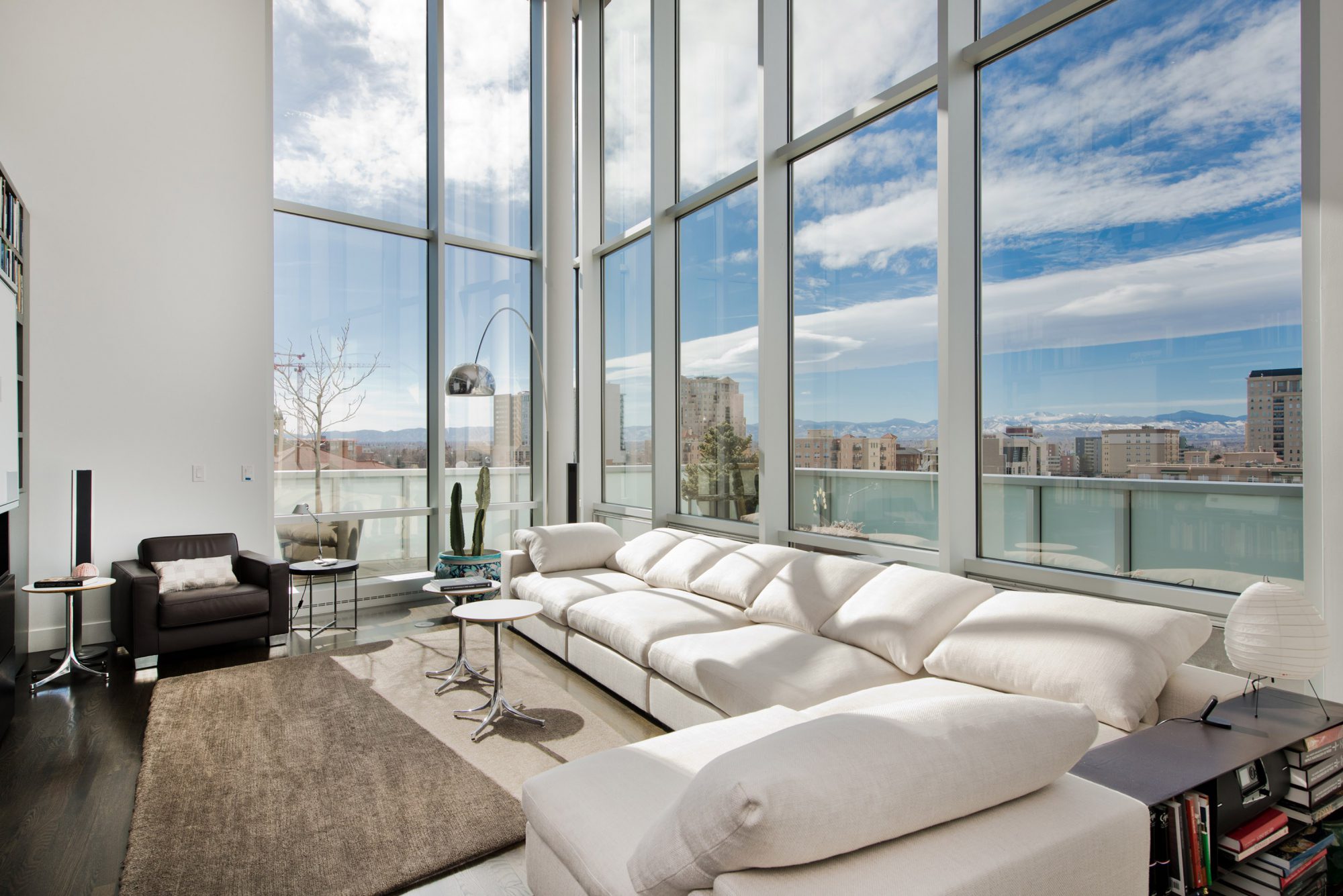
Question -
You were the second group of buyers to select a residence. Why, of all the residences available, did you select Penthouse 604?
Robert -
After reviewing all of the floorplans, we felt 604 was by far the best residence in the building. The vaulted ceilings and double-height windows make you feel as though you are “outside”. We enjoy the corner location as well as being elevated above the plaza - it is very quiet up there. The views are never the same; they change daily from season to season with the reflections from the Denver Art Museum’s titanium walls. The downtown views make dinner or breakfast on the terrace something very special.
Joan -
Suite 601 (at the opposite end of the hallway) is the largest unit, and it is an incredible space for exhibiting art and entertaining, but for day-to-day living, we think 604 takes the cake. The terrace is a wonderful outdoor space, very quiet and private. The apartment is totally unique - there is not another one like it in Denver or the world. We had it further customized by an architect who practices with Davis Partners, which was the local firm that worked with Daniel on the building.
The changing light is what immediately struck us upon moving from closed-in Cherry Creek North to the Museum Residences. Every day presents a new “performance” of light and weather, whether it is a sunrise reflected off the mountains and buildings opposite us, more permutations of a sunset than you can imagine, or a dramatic storm rolling in from the west. The light is especially wonderful in the winter, when the mountains are covered in snow; blizzards put on a fantastic show.

Question -
Typically, buyers look to condos for single-floor living. Were the stairs ever a concern for you, even as you aged?
Joan -
I am into stairs for physical fitness. At times when I was without my stationary bike, I used the stairs for cardio purposes, increasing the duration of my trips up and down from 3 minutes to 6 to 10 etc. It is a great workout - I saw the stairs as my personal, very attractive-looking stairmaster. I also used the bottom stairs for step exercises and tried to go up two stairs at a time when I wasn’t hauling something with me. The railing offers plenty of security for those (such as myself) who have balance issues.
The other thing about the stairs is that they make the place feel more like a house and less like an apartment. Plenty of folks remarked upon the fact that our condo felt like a full-scale home with places for us to be separate as well as together.
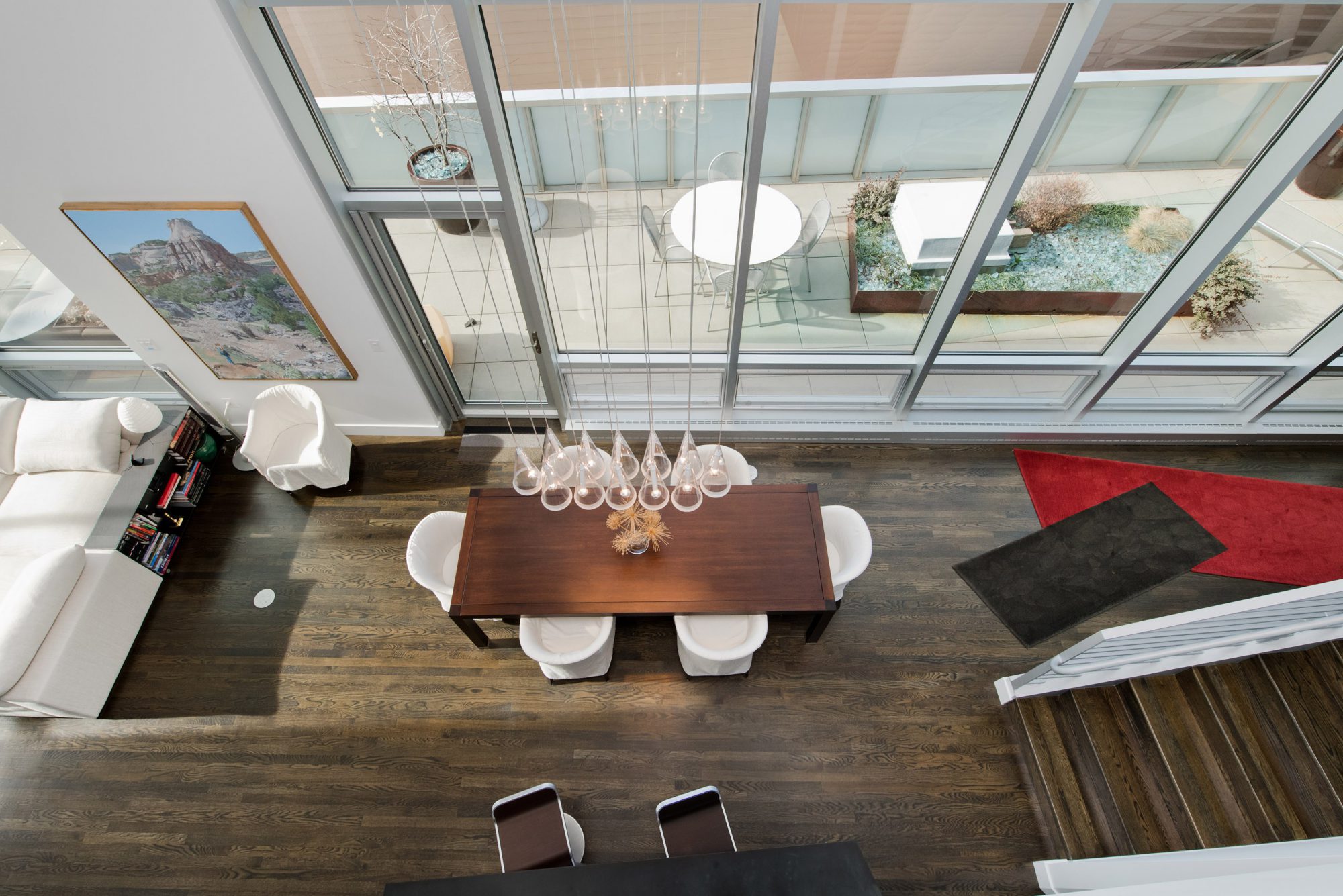

Question -
The summer sun is oppressive, do you regret buying a residence with double-height ceilings? Did the sun prohibit you from using the terrace as you pleased?
Joan -
I never went out in the summer sun when it was blazing when I lived in Cherry Creek North. For good or for ill, pervasive sunshine is one of the inescapable features of life in Colorado, and just about everyone has blinds and shutters ready to be deployed against it. On the plus side, one can really enjoy the terrace in the winter because of the sun.
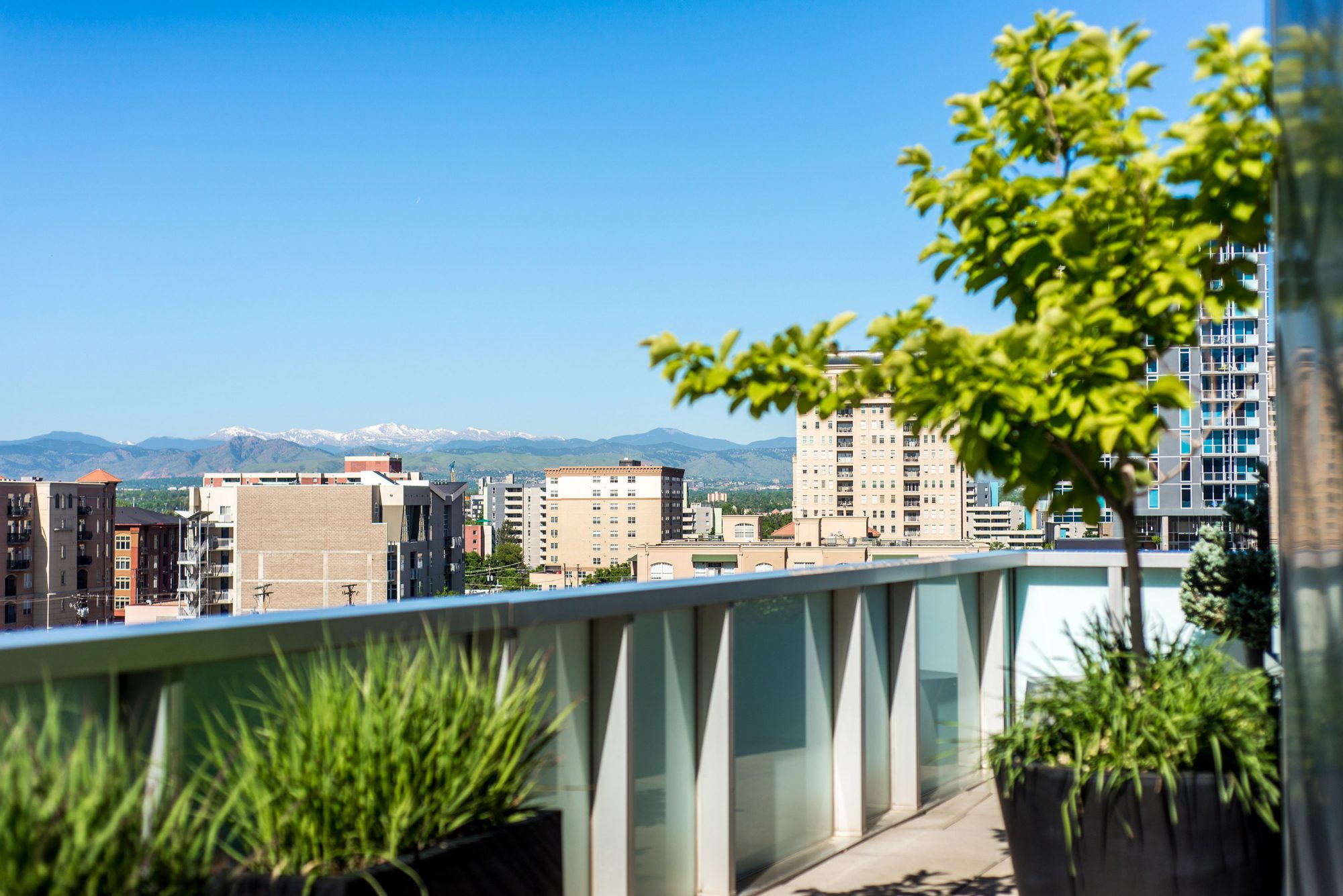
Question -
There is a lot of construction in the Golden Triangle. Certainly losing the mountain views would be a shame. Did the addition of the apartment building to the west ruin your enjoyment of your residence or did it simply change the dynamic and perspective of the “world” around you? Has the construction ultimately made the neighborhood a better place to live?
Joan -
Of course one always mourns the loss of a view. The new buildings are actually helpful during the summer for sun mitigation purposes - I used to be blinded while cooking dinner before the big one opposite us went up. We also loved the city views, though, especially looking toward Civic Center, which will never change. Roundabout the fourth of July and New Year’s, we could see the fireworks of at least a dozen municipalities.
We always knew there would be more building in the Golden Triangle and welcomed it because a growing population is necessary to support restaurants, shops, and a healthy street life.


Question -
The Golden Triangle is Denver’s cultural epicenter with regards to museums, art
galleries and the Denver Public Library. Did you find yourself growing culturally living in that
environment?
Robert -
It’s very special to be a member of these institutions and very convenient to take the
elevator down to street level and walk to an exciting event at any one of these institutions on a moment’s notice.
Joan -
Every new museum that opens in the neighborhood reinforces its character as Denver’s
premier cultural center.
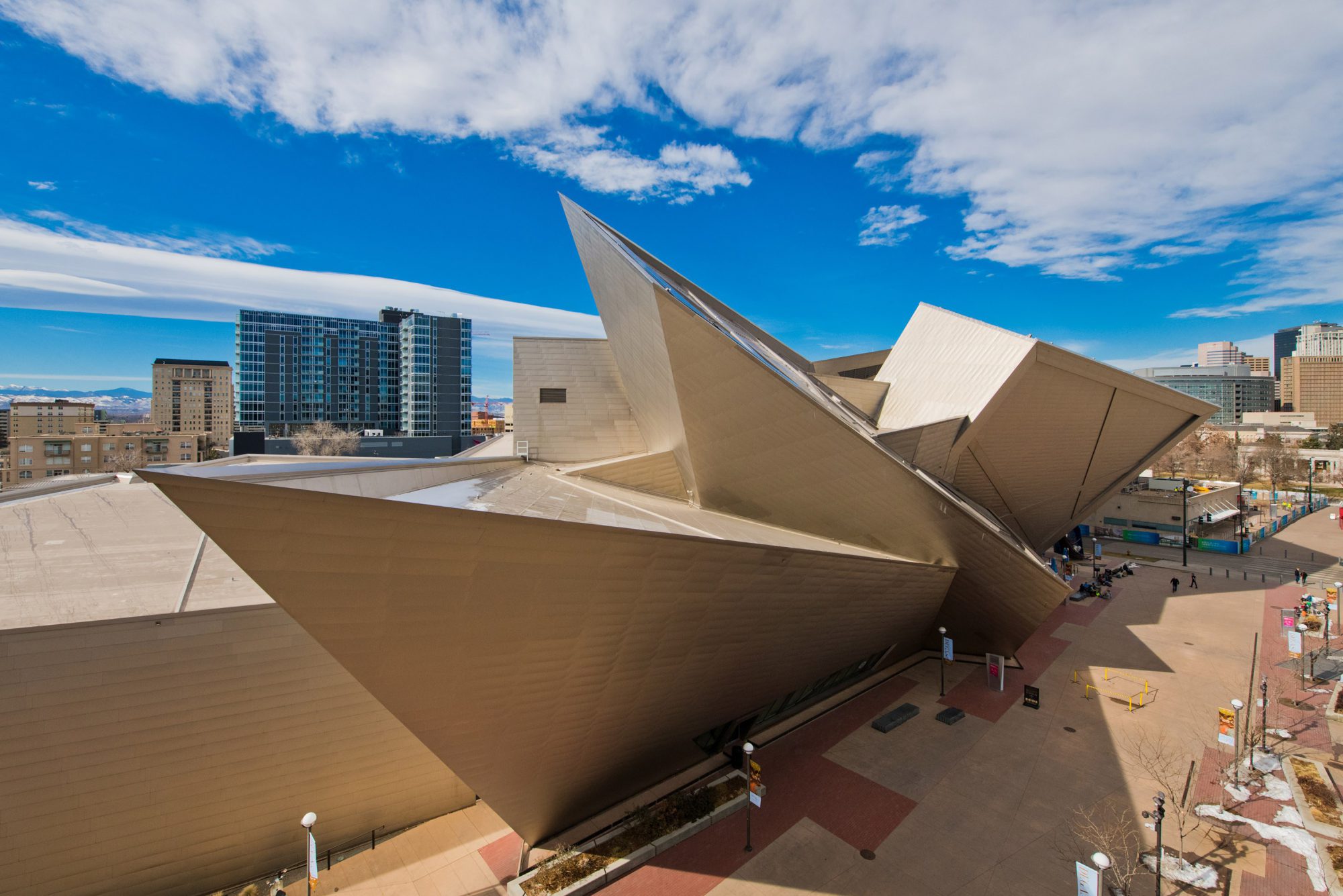
Question -
How has the creation of the Frederic C. Hamilton building changed the neighborhood?
Joan -
The Hamilton Building was the catalyst for the total transformation of the neighborhood, which was mostly a bunch of parking lots (plus Evans School) before it was built. Every block between Speer and Civic Center Park has changed dramatically since the museum’s expansion. It’s important to recognize that the Hamilton Building and the Museum Residences, which were conceived together from the start, completely altered the spatial and aesthetic experience of that part of town. The Hamilton Building would not ‘work’ if it did not have its symbiotic relationship with the Museum
Residences.

Question -
What about the addition of the Clyfford Still and Kirkland Museum? What do they mean to you as the former Deputy Director of the Art Museum but more importantly, as a resident of the
neighborhood?
Joan -
I was a great fan of the Kirkland Museum when it was in its old location, and it is, of course, still quite wonderful.
The new building is perfect, in my opinion. The Clyfford Still Museum was another adventure in which I was involved as Deputy Director. Clyfford Still was the most eccentric of the Abstract Expressionist painters who achieved what has been called “the triumph of American painting” in the 1950s. As his career went on, Still became obsessed with hoarding his art and very little of it was sold during his lifetime. In his will, he stipulated that his collection could only be donated to a city, not to a museum, and that it could not be shown with the work of any other artist. Still died in 1980, and his much younger widow dedicated herself to upholding his wishes, with the result that his art virtually disappeared from public view for decades. Finally, as she became very elderly, a nephew began to approach various cities on her behalf in an effort to place the collection. Negotiations always fell through, perhaps because most municipalities don’t specialize in preserving and exhibiting works of art, especially in accordance with Still’s strict conditions. Even though the Denver Art Museum itself could not accept the collection, the museum advised John Hickenlooper (then Mayor of Denver) on securing the gift to the city, which occurred when Still’s widow passed away in 2005.
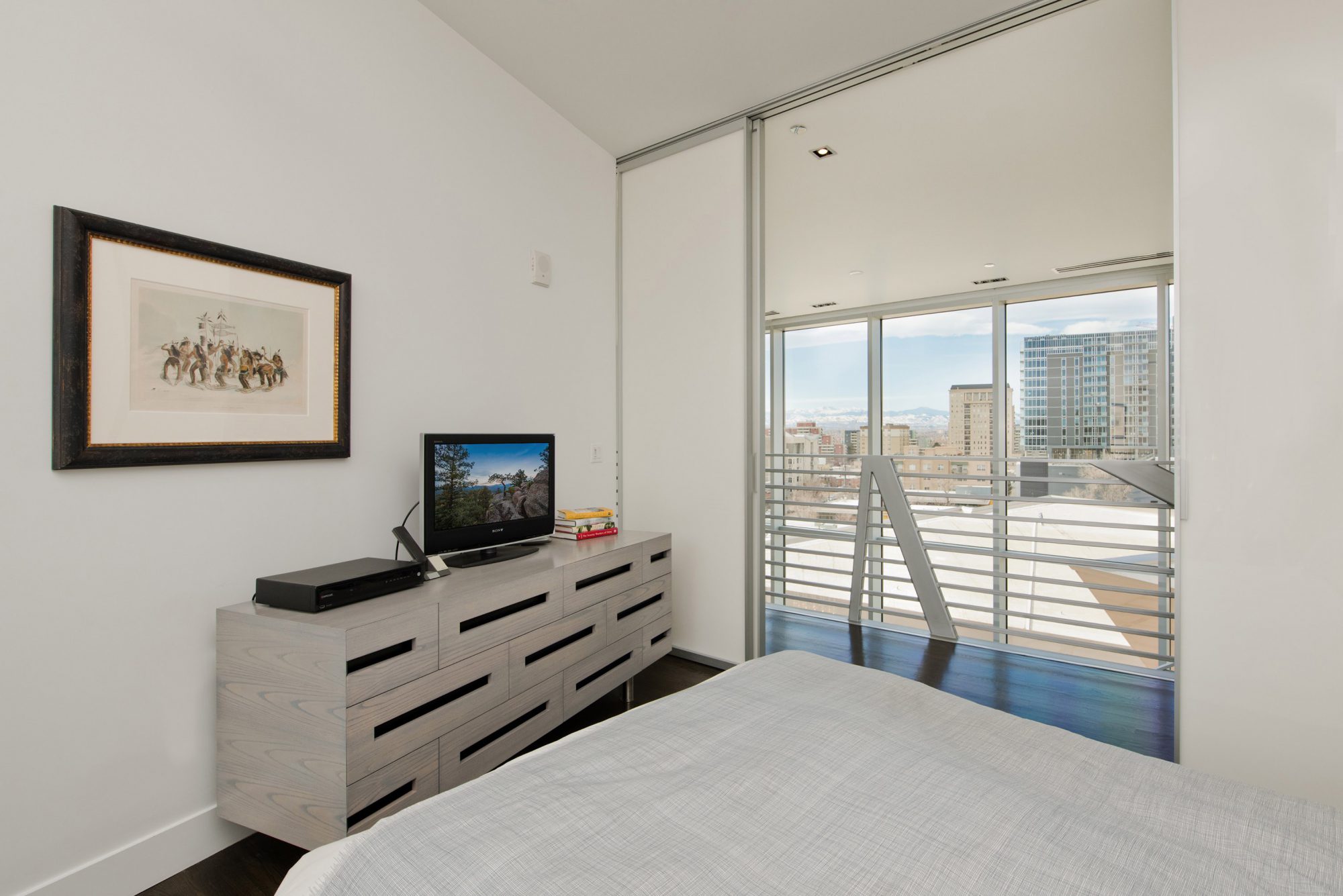
Question -
What are the top three-to-five things you’ll miss most about the residence, the building, the neighborhood and/or the community?
Robert -
In no particular order: the people who live in the building, the views - both urban and
mountain, the architecture, the Denver Art Museum, looking out through the walls of glass from bed each morning.
Joan -
I totally concur with Robert regarding what we’ll miss most about 604. The people who choose to live in the Museum Residences tend to be creative types - art collectors, world travelers, folks from other countries, etc. We found lots of kindred spirits in the Museum Residences. Now you are making me shed a tear for the wonderful friends we are leaving behind.
